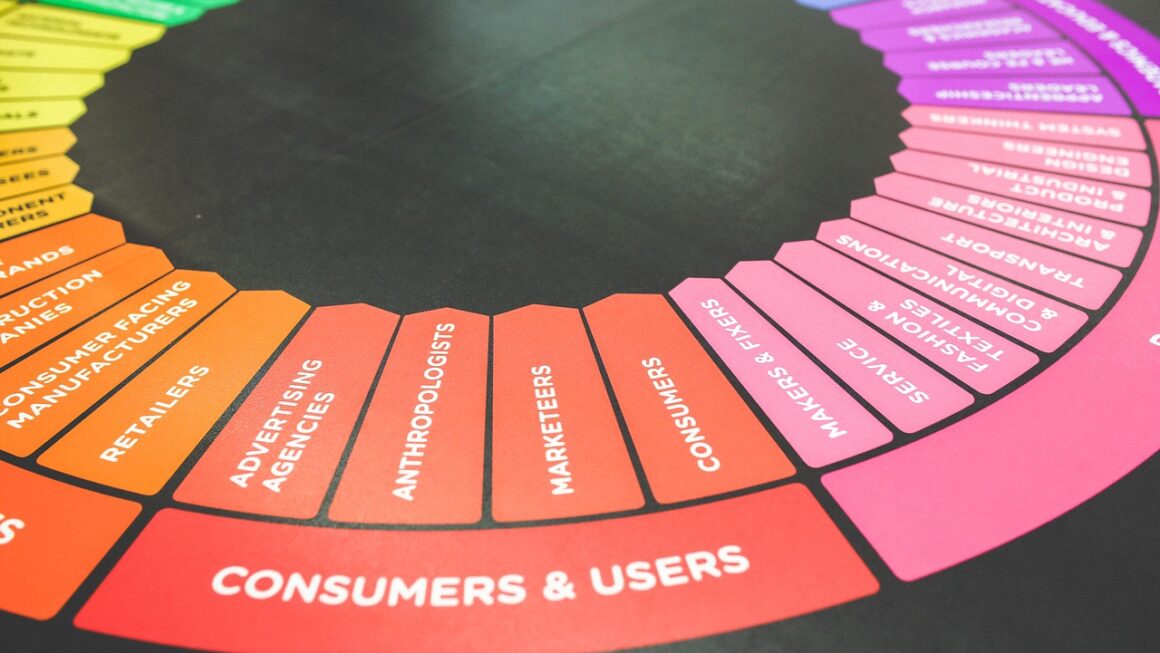Artificial intelligence (AI) is rapidly transforming the world of analytics, empowering businesses to extract deeper insights, automate processes, and make data-driven decisions with unprecedented speed and accuracy. This blog post delves into the realm of AI analytics tools, exploring their capabilities, benefits, and how they can revolutionize your approach to data analysis.
Understanding AI Analytics
AI analytics combines the power of artificial intelligence, including machine learning and natural language processing, with traditional analytics methods. This synergy allows for more sophisticated analysis, predictive modeling, and automated reporting.
What is AI Analytics?
AI analytics goes beyond descriptive and diagnostic analytics by incorporating predictive and prescriptive capabilities. It uses algorithms to identify patterns, predict future trends, and recommend actions based on data.
- Descriptive Analytics: What happened? (e.g., Sales figures from last quarter)
- Diagnostic Analytics: Why did it happen? (e.g., Reasons for sales decline)
- Predictive Analytics: What will happen? (e.g., Forecasting sales for next quarter)
- Prescriptive Analytics: What should we do? (e.g., Recommendations to improve sales)
Key Components of AI Analytics
Several AI technologies contribute to AI analytics tools:
- Machine Learning (ML): Algorithms that learn from data without explicit programming. For example, a machine learning model can be trained on historical customer data to predict which customers are likely to churn.
- Natural Language Processing (NLP): Enables computers to understand and process human language. An NLP tool can analyze customer reviews to identify common themes and sentiment.
- Deep Learning: A subset of machine learning using neural networks with multiple layers for complex pattern recognition. For example, identifying fraud through anomaly detection based on intricate transaction patterns.
- Computer Vision: Allows computers to “see” and interpret images and videos. For example, analyzing shelf inventory in retail stores to optimize product placement.
- Actionable Takeaway: Understand the fundamental components of AI analytics to identify the most relevant tools for your specific business needs.
Benefits of Using AI Analytics Tools
Implementing AI analytics tools can unlock significant advantages for businesses of all sizes.
Enhanced Data Insights
AI can uncover hidden patterns and relationships in data that might be missed by traditional analytics methods.
- Deeper insights: Identify complex correlations and dependencies within data sets.
- Improved accuracy: Reduce human error in data analysis and interpretation.
- Faster analysis: Automate data processing and analysis, saving time and resources.
- Example: A marketing team using AI analytics could discover that customers who engage with specific content on social media are more likely to convert into paying customers. This insight can inform targeted advertising campaigns, maximizing ROI.
Automation and Efficiency
AI analytics automates many tasks that are traditionally performed manually, freeing up analysts to focus on more strategic initiatives.
- Automated data cleaning and preprocessing: Reduces the time spent preparing data for analysis.
- Automated report generation: Creates customized reports automatically based on pre-defined parameters.
- Automated anomaly detection: Identifies unusual patterns or outliers in data, alerting analysts to potential problems.
- Example: An e-commerce company can use AI to automate the process of tagging and categorizing products based on images, saving countless hours of manual labor.
Improved Decision-Making
AI-powered predictions and recommendations can help businesses make more informed and data-driven decisions.
- Predictive modeling: Forecast future trends and outcomes with greater accuracy.
- Personalized recommendations: Provide tailored recommendations to customers based on their individual preferences and behaviors.
- Optimized resource allocation: Allocate resources more effectively based on data-driven insights.
- Example: A supply chain manager can use AI to predict demand fluctuations and optimize inventory levels, reducing waste and improving efficiency.
- Actionable Takeaway: Quantify the potential benefits of AI analytics for your organization by identifying specific use cases and measuring the expected ROI.
Popular AI Analytics Tools
A wide range of AI analytics tools are available, catering to different needs and skill levels.
Cloud-Based Platforms
These platforms offer a comprehensive suite of AI and analytics services, often with pay-as-you-go pricing.
- Amazon SageMaker: A fully managed machine learning service that enables data scientists and developers to build, train, and deploy machine learning models. It offers a wide range of pre-built algorithms and frameworks.
- Google Cloud AI Platform: Provides a comprehensive set of tools for building and deploying AI models, including AutoML for automating model development. Integrates seamlessly with other Google Cloud services.
- Microsoft Azure Machine Learning: A cloud-based machine learning service that allows users to build, train, and deploy machine learning models. It offers a drag-and-drop interface and supports various programming languages.
Specialized AI Analytics Software
These tools focus on specific applications of AI analytics, such as marketing, finance, or healthcare.
- DataRobot: An automated machine learning platform that helps users build and deploy predictive models quickly and easily, without requiring extensive coding knowledge. Focuses on ease of use and speed.
- Alteryx: A data analytics platform that combines data preparation, data blending, and advanced analytics capabilities. Offers a user-friendly interface and supports a wide range of data sources.
- Tableau CRM (formerly Einstein Analytics): An AI-powered analytics platform designed for Salesforce users. Provides insights and recommendations within the Salesforce ecosystem.
Open-Source Libraries
These libraries provide building blocks for developing custom AI analytics solutions.
- TensorFlow: An open-source machine learning framework developed by Google. Offers a flexible and powerful platform for building and training complex neural networks.
- PyTorch: An open-source machine learning framework that is popular for research and development. Provides a dynamic and intuitive interface for building and training models.
- Scikit-learn: A Python library for machine learning that provides a wide range of algorithms for classification, regression, clustering, and dimensionality reduction. Easy to use and well-documented.
- Actionable Takeaway: Research and compare different AI analytics tools to find the best fit for your organization’s specific needs, budget, and technical expertise. Consider starting with a free trial or pilot project.
Implementing AI Analytics Successfully
Successful implementation of AI analytics requires careful planning, execution, and ongoing monitoring.
Define Clear Business Objectives
Start by identifying the specific business problems you want to solve with AI analytics.
- Specific: Clearly define the goals you want to achieve. (e.g., Reduce customer churn by 15%)
- Measurable: Establish metrics to track progress towards your goals. (e.g., Churn rate, customer lifetime value)
- Achievable: Set realistic goals that are attainable with your available resources.
- Relevant: Ensure that your goals are aligned with your overall business strategy.
- Time-bound: Set a deadline for achieving your goals. (e.g., Within the next quarter)
Data Quality and Preparation
Ensure that your data is accurate, complete, and consistent.
- Data cleaning: Remove errors, inconsistencies, and duplicates from your data.
- Data transformation: Convert data into a suitable format for analysis.
- Data integration: Combine data from different sources into a unified dataset.
- Example: Before training a machine learning model to predict customer churn, ensure that customer data is cleansed of any missing values or inconsistencies, like different spellings of the same city.
Skills and Expertise
Build a team with the necessary skills to develop, deploy, and maintain AI analytics solutions.
- Data scientists: Expertise in machine learning, statistics, and data analysis.
- Data engineers: Expertise in data storage, processing, and infrastructure.
- Business analysts: Expertise in understanding business needs and translating them into technical requirements.
- Actionable Takeaway: Invest in training and development to equip your team with the skills necessary to leverage AI analytics effectively. Consider hiring external consultants or partnering with AI experts to bridge any skill gaps.
Challenges and Considerations
Implementing AI analytics is not without its challenges.
Data Privacy and Security
Ensure that you are complying with all relevant data privacy regulations.
- GDPR (General Data Protection Regulation): Protects the personal data of EU citizens.
- CCPA (California Consumer Privacy Act): Protects the personal data of California residents.
- HIPAA (Health Insurance Portability and Accountability Act): Protects the privacy and security of protected health information.
Bias and Fairness
Address potential biases in your data and algorithms.
- Data bias: Ensure that your data is representative of the population you are analyzing.
- Algorithmic bias: Evaluate your algorithms for potential bias and take steps to mitigate it.
- Example: When using AI to automate hiring decisions, ensure that the algorithm is not biased against any particular demographic group.
Explainability and Transparency
Make sure that your AI models are explainable and transparent.
- Explainable AI (XAI): Develop models that can explain their predictions and decisions.
- Transparency: Be transparent about how your AI models are being used and how they are impacting decisions.
- Actionable Takeaway: Prioritize data privacy, fairness, and transparency when implementing AI analytics. Implement safeguards to prevent bias and ensure that your AI models are explainable and accountable.
Conclusion
AI analytics tools offer tremendous potential for businesses seeking to gain a competitive edge in today’s data-driven world. By understanding the key components, benefits, and challenges of AI analytics, organizations can effectively leverage these tools to unlock deeper insights, automate processes, and make more informed decisions. With careful planning, execution, and a commitment to ethical considerations, AI analytics can revolutionize your approach to data analysis and drive significant business value. Start exploring the possibilities of AI analytics today and unlock the full potential of your data.




